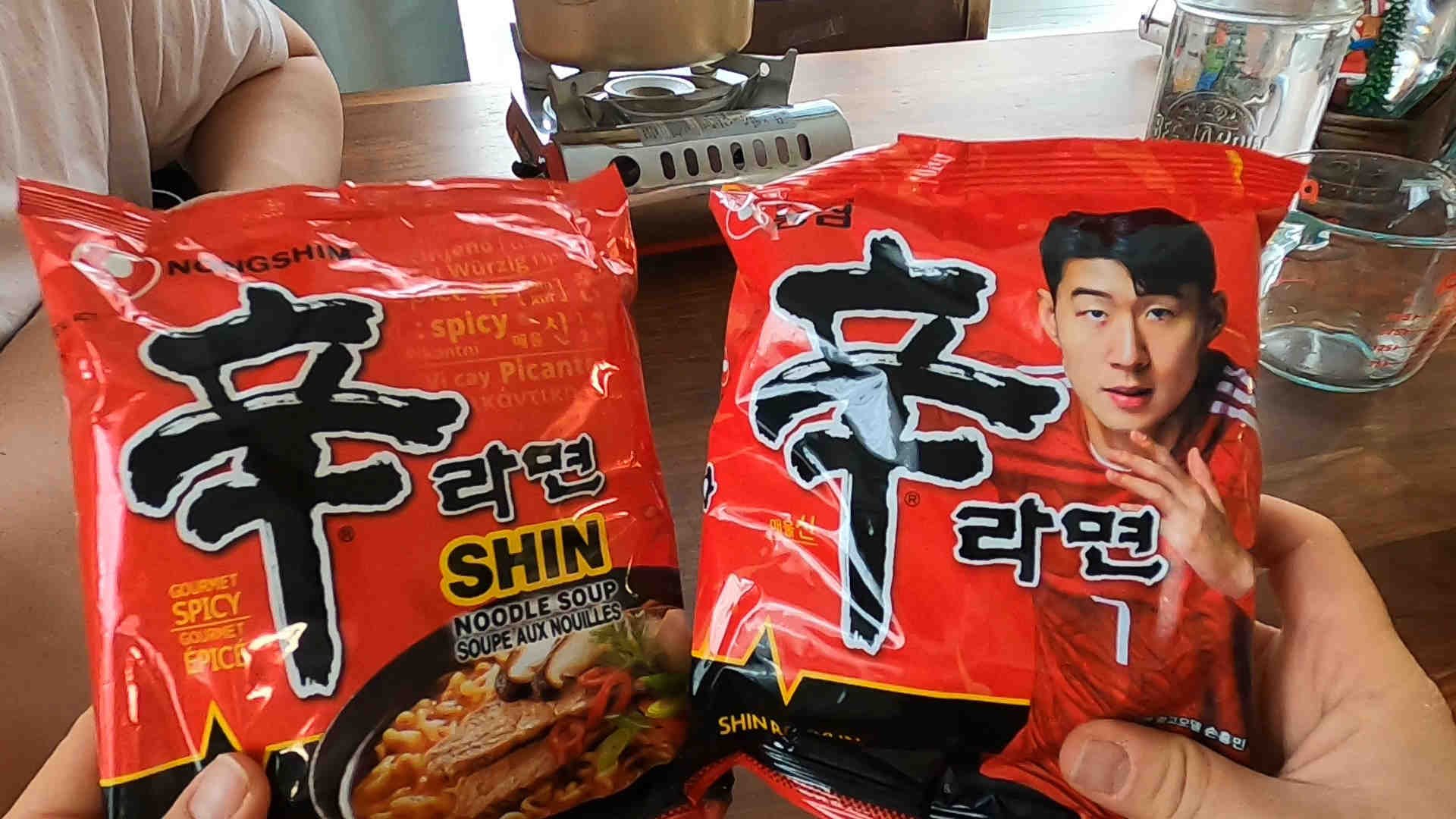Shin Ramyun (The Difference between Made in USA and Made in Korea)
We got our hands on a package of Shin Ramyun manufactured in Korea. Which is rather strange, really. You’d think the same product, by the same company would basically be… identical. Wouldn’t they just replicate their special recipe and recreate them the same way?
One, I didn’t realize Nongshim, the maker of Shin Ramyun, had a factory in the United States. They’re that big! Two, I also realized even juggernaut McDonald’s have different menus around the world- to suit local tastes.
So upon further reflection, it makes perfect sense that the same Shin Ramyun manufactured in different countries would have differences. Although this makes me want to try other Shin Ramyun manufactured in other countries.
Back to the topic at hand. Visually, both Shin Ramyun made in America and Korea look the same out of the package. Noodles, a foil soup packet and a plastic dehydrated ingredients package.
Shin Ramyun Cooking Instructions
The directions indicate to add 550 ml of water and to cook it for 4 1/2 mins. OPPA follows the directions exactly (even using a measuring cup!) exactly and I find the noodles too soft for my liking. But this is all personal preference, I like my noodles to have a bit of bite, OPPA likes them honestly, a bit mushy.
You can also adjust the amount of water to your liking. OPPA will sometimes use less water to intensify the flavours more. Sometimes, we’ll only have Teum-Sae Ramyun on hand, and those are way too spicy for me so I use more water and use only half the spice packet. Bonus tip: If the noodles are too spicy, adding an egg will help.
The Differences between Shin Ramyun made in USA vs Korea
SOUP
Shin Ramyun (USA): Tastes very rich and creamy. OPPA likens the flavour to beef bouillon or North American powdered beef stock like Knorr.
Shin Ramyun (Korea): Tastes strongly of Dasida (Korean powdered beef stock with added MSG), a very familiar flavour for most Koreans. Spicier 🔥.
The American Shin Ramyun soup colour is much browner and the Korean Shin Ramyun much redder when viewed in a side-by-side comparison.
Also, we don’t own a kitchen scale, and honestly are not the type to get too scientifically uptight about getting exact measurements (“eyeball that shit”), but OPPA felt the Korean dry ingredients packet had more (ingredients).
What is Dasida?
A beef flavoured powdered seasoning that contains the perfect combination of ingredients including MSG that makes dishes delicious. It exploded into mainstream popularity in the late 70’s and was common in most households by the 80’s. Also referred to as 마법가루 Magic Powder lol.
NOODLES
This was quite the unexpected difference for us. I mean, instant noodles, how different can it be? Oh, but it was. And what a difference it was too.
Shin Ramyun (USA): Noodles taste fine. Nothing to write home about. Then we had the Korean ones- in comparison, these taste overly wheat-y. Very flour-y.
Shin Ramyun (Korea): Even cooked at the full 4 1/2 mins as per the directions on the package, noodles retained their chew and spring. Even left to sit an extra few minutes, they were still spring-y and chewy. It was incredible!
Best Before Date
Shin Ramyun (USA): We bought in late November and it had an expiry date of September the following year. Assuming that it was shipped to the Canadian store from an American warehouse, and allowing for some shelf time before we bought it, we assume Shin Ramyun made in the US has an expiry date of 12 months.
Shin Ramyun (Korea): The best before date for Korean-made Shin Ramyun is 6 months.
Keep in mind we don’t have any additional facts than what’s listed on the package. The soup spice level is different. The noodle consistency and texture is completely different.
The Unanswered Whys?
The soup list of ingredients is extremely long with many unpronounceable names. And who knows if the translation got through properly? Also, different countries have different labelling requirements for food products.
The obvious guess is that more or more potent chili powder is added to the Korean version.
In terms of the noodles, the ingredients are short and clear: Wheat, potato starch and palm oil. By the way, does everyone know instant noodles are deep-fried? Embarrassingly, I found out not too long ago. Initially, it was a method of reducing the moisture content as much as possible to allow for longer preservation (Less moisture= less chance of bacterial growth= lasts longer).
Going off on another tangent (whee!), they do make “air-fried” noodles now, but they just don’t taste as… tasty. Which tells you the power of oil and deep-frying foods in it. Apparently, OPPA’s mom tells of how instant noodles tasted even better before because they were fried in animal fat. Lard. Mmm.
Of course they were. Hello, ever had duck fat fries?
We figure that the expiration date difference is simple logistics. In Korea, instant noodles are kept stocked in most households. Shin Ramyun, being the most popular in the country, has got to have a fast turnover. If they fly off the shelves, there is no need for a very long best before date, plus consumers feel like they’re getting a fresh product.
Forget the irony of instant noodles needing to be “fresh”.
In North America, even though the popularity of instant noodles is constantly growing, I don’t think it’s yet a kitchen staple. Perhaps it needs a year-long shelf life to sell the stock.
I used to think ramyun was zombie food, but apparently you really shouldn’t consume it past the 2-year mark.
That said, in a zombie apocalypse, I would eat it 🤭.


